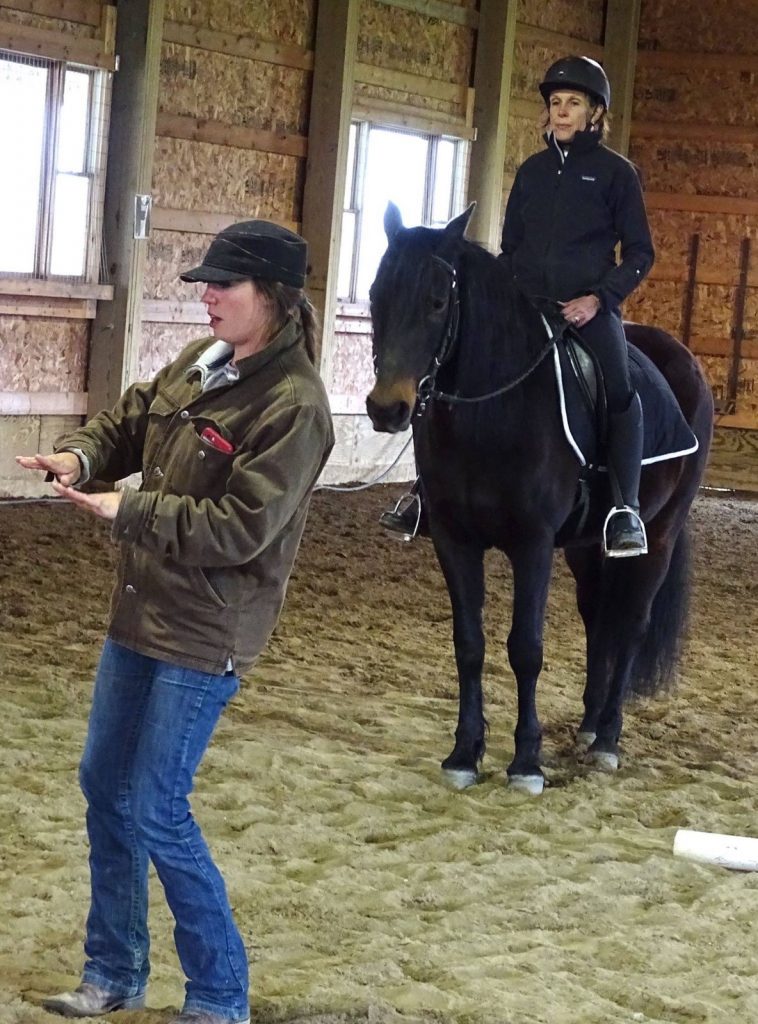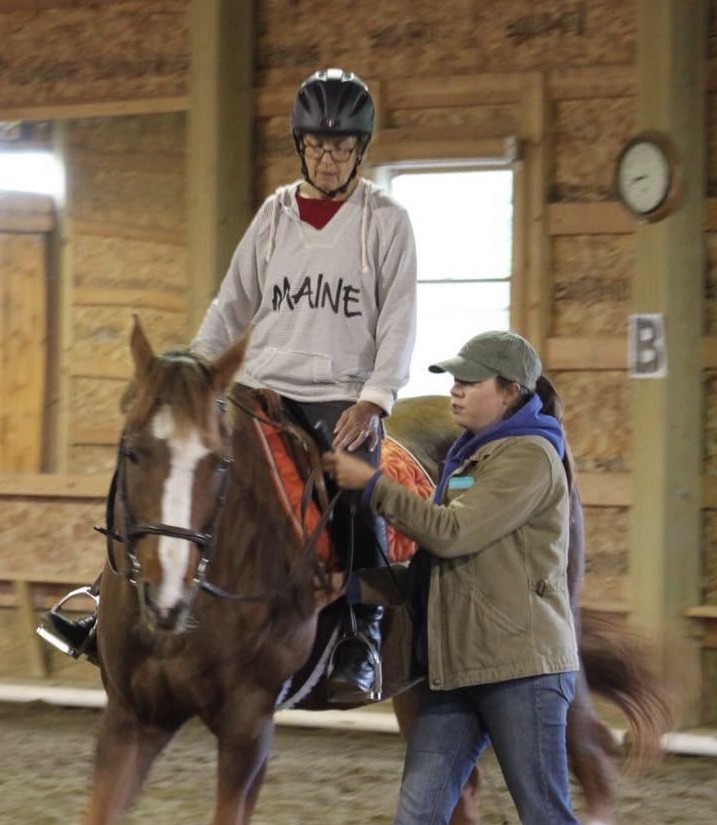 Editor’s Note: Amy Skinner is a regular guest columnist and has been a horse gal since age six. She will present with fellow trainer and rider, Katrin Silva, at the Best Horse Practices Summit.
Editor’s Note: Amy Skinner is a regular guest columnist and has been a horse gal since age six. She will present with fellow trainer and rider, Katrin Silva, at the Best Horse Practices Summit.
Skinner rides and teaches dressage and Western. Skinner has studied at the Royal Andalusian School of Equestrian Art in Spain, with Buck Brannaman, Leslie Desmond, Brent Graef, and many others. Visit Amy’s website here.
Skinner writes:
I do almost nothing with my horses by schedule. I feed at different times. I trim as needed, not with a 6-week rotation. My rides are different, every time. I think of the land I’m riding on as my canvas and my horse as the paintbrush. Who knows what picture we’ll paint today? Bonus points if there’s fresh snow or wet sand. Then I can really make some interesting art.
When I teach people, they often ask me for answers in terms of absolutes:
- What hole do I adjust the girth to?
- How many left circles should I make?
I tell them to look at the skin of the girth area and check the saddle. There is no set hole that will work every day, as weight and muscle tone changes.
 I tell them to make circles until they feel good. That number is different every day, too.
I tell them to make circles until they feel good. That number is different every day, too.
This want for rules is part of the reason specific and rule-focused programs (You name ‘em, there are scores out there.) are so popular. They offer owners and riders step-by-step rule books, with promises of success if you diligently go through their levels (and pay all the way).
But this type of program creates rigid riders and rigid thinkers. These folks often can’t see a situation at face value and cannot adjust when situations change (which they always do).
For example: A co-worker and I once had a hearty debate over whether a little mustang should be scolded for pawing. He saw the pawing as a misbehavior, no doubt something taught in somebody’s program. He said, ‘Be the boss. Always move your horses’ feet. Don’t let them get away with that. Get after them.’ And so on and so forth. But to me, the broader picture was in this mustang’s combination of frustration and the beginning of letting down toward relaxation. She had been very tense and, in my opinion, needed to be left alone with enough time to sort it out.
You can’t just look at the one thing – pawing. You have to look at the whole picture – pawing; head lowering, then shooting back up, licking and chewing, slow blinking, etc.
The step-by-step, regimented program often fails horses like this whose behavior can’t be neatly labeled as “good” or “bad” or put in a box.
I do everything by feel, sans recipe. I think of good horsemanship like good cooking. There are principles and laws of nature one must abide by. Read more about Riding without Recipes.
 If you put too much heat under your pan, it will scorch. Salt makes things taste better. But too much can never be taken out. Proportions and flavor combinations must be considered. My food almost never tastes the same way twice, but each new meal is an interesting discovery, an adventure for the senses.
If you put too much heat under your pan, it will scorch. Salt makes things taste better. But too much can never be taken out. Proportions and flavor combinations must be considered. My food almost never tastes the same way twice, but each new meal is an interesting discovery, an adventure for the senses.
It’s hard to get people to think and be open to experimentation. People can be afraid to make mistakes, which I can sympathize with, or they just don’t want to work that hard.
“Just tell me what to do,” one of my students once said to me.
I replied, “Sorry, but it isn’t that easy. Not in this barn. Watch your horse, not me. Let him tell you what needs doing.
“This is not paint-by-numbers horsemanship. It is equal parts art and science. No two moments are ever the same, so it’s essential to be able to read the horse and respond in the moment.
Here’s another comparison: When you’re learning to dance, you may focus on memorizing steps. You count one-two-three to the beat and step on your teacher’s toes a time or two. But as you get the hang of it, you start to understand the dancing concept in a broader way. You don’t need to count. You can feel it. You understand the beat, how the dance steps fit, and you can embellish, adding fun little twirls and turns. It’s something you can enjoy and lose yourself in. This connection with a partner and based in feel is a joy that can’t be described if you haven’t felt it.
Part of the problem may be that not enough people appreciate, make, and love art. I ask my students if they dance. Most say no. So, it can be hard to bring understanding by making comparisons to things people know nothing about.
Still, try to learn the principles, throw out the recipes. Enjoy the dance.
This article spoke directly to my soul. I love to cook, so your analogy made perfect sense to me. As for dancing…the other night, I was washing off my Gypsy Vanner’s mane, and a peppy tune came on the radio. I couldn’t help but spring into a little cotton eyed joe right there in the wash bay. Pistol sighed, licked and chewed, and I think he was probably laughing inside. Let’s give a hooah for the foundations our grannies gave us in cooking, modifying the recipe for whatever flavor we want today. 🙂